Genre: Strategy/RPG Developer: Masaya Publisher: Treco Players: 1 Released: 1991
Among fans of the strategy/RPG genre, Warsong has a special place. The first in a long-running series known as Langrisser, it’s also the only one to make it to the U.S. Considering that there are still installments being released, the lack of love is blatantly apparent. Sigh… once again American gamers get the shaft. So what else is new?
At least Warsong‘s story is decent. It may not numb the pain, but it helps. As Prince Garrett of Baltia, you had to flee your kingdom when it fell under siege. The Dalsis Empire invaded looking for the fabled sword Warsong, and now Garrett must find the legendary weapon first and use it to reclaim his land.
Simple enough, right? Well, the Langrisser games aren’t overly complicated or anything; far from it. They’re quite user-friendly, and the scale of combat that’s the series’ calling card is something only Dragon Force has ever matched in grandeur. That, my friends, is the secret to Masaya’s masterpiece. The simplicity of the graphics and interface lure you into thinking that you’ll be in and out in only a few hours. Once you start playing, however, things change big time. Before you know it, mere hours have turned into days, and you’re completely sucked into the addicting the gameplay. That is the hallmark of a great game, something too few titles today know how to do well.
At the heart of it all is Warsong‘s basic gameplay set up. Instead of commanding a group of heroes, a la Shining Force, you’re in control of a total army. Individual units are comprised of ten soldiers that you buy at the beginning of each scenario. You can purchase standard infantry, mounted horsemen, or archers, and assign them to one of your loyal generals. Several factors come into play when determining a battle’s outcome, like the types of troops involved and even terrain. Weaker soldiers with higher ground can last much longer than on a level battlefield, and this strategy allows you to fend off superior forces with weaker troops.
Speaking of combat, the way your forces engage the enemy is awesome. Well, it sure was awesome in 1991. The screen switches to a side view of the attacking force rushing the defenders and engaging them in hand-to-hand combat. This can go one of two ways: if you’re the superior force, you can basically overwhelm the enemy like the surf on a beach. If you’re not, sit back and watch your men get slaughtered.
And what kind of commander would you be if you weren’t there in the trenches with your men? You can get in on the action too, but the game’s over if you’re killed. Your generals aren’t of the armchair variety either and they engage in combat, as well as replenish any depleted units next to them at the beginning of your turn. Experience is given to both the general and their troops, and your commanders can even be promoted and change class. The only problem is that they can be killed, and unlike Shining Force, if they die, it’s for the entire game. You might be a bit hesitant to cast them into battle in the early going, but they soon become quite capable of taking care of themselves once they gain a few levels.
I think the best aspect of Warsong‘s combat is that you can tackle a scenario in different ways. You can slowly destroy the opposing force by taking out each unit individually, or you can go right for the jugular and nail their commander, taking all his forces with him. The former is a great way to level up and develop your strategy, while the latter works when you haven’t the troop strength for a prolonged conflict or need to get through a particular scenario quickly. The easy meshing of these two styles makes Warsong adaptable to most gaming styles.
All this depth of gameplay comes at a price, and while Warsong‘s isn’t too steep, it’s very obvious. The visuals aren’t up to par with other titles in the genre, and some gamers might get a nasty frowny face if they play it right after Shining Force. No friends, there aren’t any pretty magic effects here. Sprites are small and not well detailed, and the maps are muddy and sometimes even bland. Will you mind? Probably not, since the number of troops on-screen at once is large, and the buttery goodness of the gameplay wipes away complaints like some type of digital pheromone.
I’d toss the audio in there as well, but the soundtrack deserves a positive mention. Noriyuki Iwadare’s (Lunar, Grandia) score does its best to overcome the limitations of the hardware and succeeds for the most part. This is one of those instances where you have to go with the quality of the compositions themselves, as opposed to the hardware they’re on.
The sound might be the first fault you encounter, but it’s not the only one. The biggest problem comes in combat, from the enemies themselves. The A.I. can occasionally make some really dumb decisions, like letting a moribund general go or sending one weak unit into the teeth of your best troops. This makes the first few scenarios more easy than they should be, but the difficulty does pick up later on.
None of this really detracts from the great gaming experience that is Warsong, and there’s a reason why it tops $50 on eBay. It’s a wonderful game that’s a perfect example of how the Genesis’s strength is in its software and not its graphics. There’s simply no reason why it shouldn’t be in your collection.
SCORE: 8 out of 10

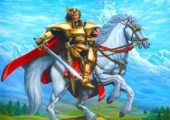
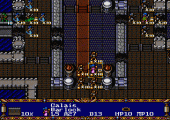
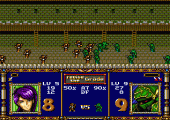
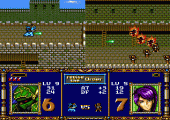
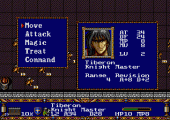
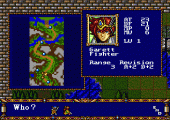
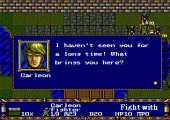
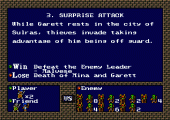
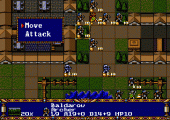
Recent Comments